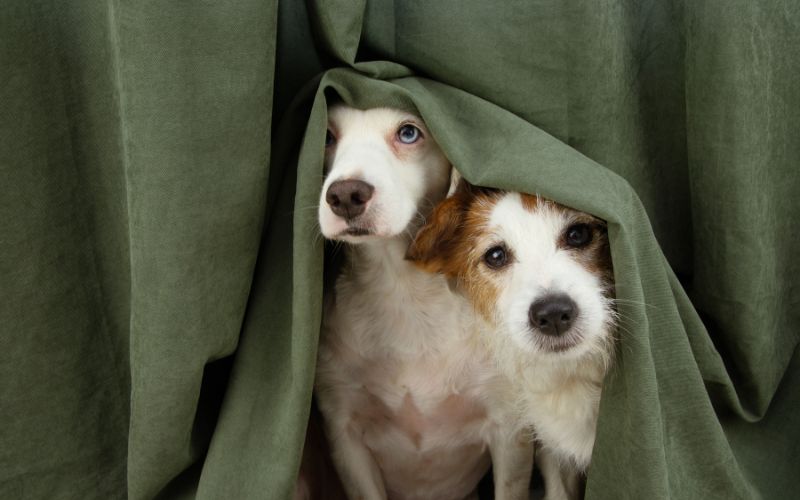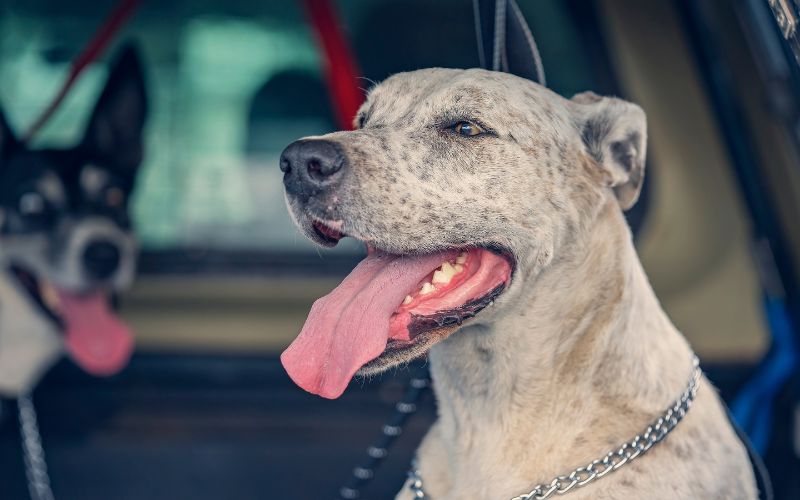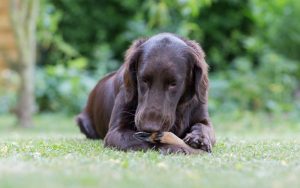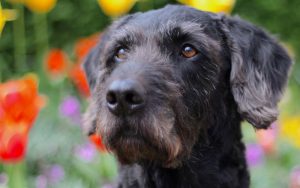Dogs will pant for a number of reasons, the most obvious one being to cool down when they have been charging around.
Panting helps a dog to regulate their body temperature.
But there can be other occasions when dogs pant and one can be when they are scared.
Dogs will pant when scared as it can help them to relax and distract them from pain or other discomfort. A dog’s panting is similar to the exercises that humans perform to help them to relax, such as breathing exercises which help to control fight or flight responses and panting can help a dog to release nervous energy and tension that has built up.
Does panting mean a dog is uncomfortable or in pain?
Panting can be a sign of discomfort or pain, but not always.
If your dog is only panting when they are in a particular situation, such as when meeting new people or animals, then this may just be their way of trying to calm themselves down.
If your dog is panting and also showing other signs of distress, such as pacing, trembling or drooling, then this may be a sign that they are uncomfortable or in pain.
If you are at all concerned about your dog’s health, then it is always best to consult with your veterinarian.
Is panting a sign of anxiety in dogs?
Anxiety can be another common cause of panting in dogs.
Just like humans, dogs can use panting as a way to control their breathing and help to relax themselves in anxious situations.
If your dog is showing other signs of anxiety, such as pacing or whining, then this may be the reason why they are panting.

Why is my dog panting and restless?
There can be a number of reasons why your dog is panting and restless.
If your dog is normally calm and relaxed, but suddenly starts panting and seems unable to settle, then this may be a sign of pain or discomfort.
It is always best to consult with your veterinarian if you are concerned about your dog’s health.
How do you calm down a scared or anxious dog?
If your dog is scared or anxious, there are a number of things that you can do to help them to calm down.
Exercise can be a great way to relieve stress and tension, so taking your dog for a walk or playing fetch with them can be beneficial.
You should also provide your dog with a safe place to retreat to when they are feeling anxious.
This could be a quiet room in your house or their crate. It is important that your dog feels like they have a space where they can go to feel calm and safe.
Identify what is causing the anxiety or fear
The first step in helping your dog to cope with anxiety or fear is to identify what is causing the problem.
If your dog is afraid of loud noises, then you can begin by desensitizing them to these sounds.
This can be done by playing recordings of loud noises at a low volume and gradually increasing the volume over time.
If your dog is anxious around other people or animals, then you will need to work on socialization.
This involves slowly introducing your dog to new people and animals in a controlled environment so that they can learn that there is nothing to be afraid of.
Create a calm environment
Once you have identified what is causing your dog’s anxiety or fear, you can begin to work on creating a calm environment.
This means providing your dog with a safe space where they can go to feel calm and safe. It is also important to avoid any situations which may trigger their anxiety or fear.
If you are working on socialization, then it is important to introduce your dog to new people and animals in a slow and controlled manner.
You should always let your dog approach new people or animals at their own pace and never force them into any situation which makes them feel uncomfortable.
Provide positive reinforcement
Whenever your dog is exposed to something that makes them anxious or afraid, it is important to provide positive reinforcement.
This means rewarding them with treats or praise whenever they cope well with the situation.
This will help them to associate the positive reinforcement with the situation and will make it more likely that they will cope well in future.
Try a plugin diffuser to help your anxious dog
There are a number of products available which can help to calm an anxious dog.
One popular option is a plugin diffuser, which emits calming pheromones into the air.
These pheromones are similar to those released by a nursing mother with her litter of puppies and can calm your dog down helping to reduce your dog’s anxiety and make them feel more comfortable in stressful situations.
A product that I have used, successfully to help anxious dogs at home is the Adaptil Calm Home Diffuser.
I bought this to try and help my eldest dog with separation anxiety and fear of loud noises.
The adaptor comes with a 30 day refill and simply plugs into a mains plug socket.
Within a few hours of plugging in we all noticed that our eldest dog was much more relaxed, more able to ‘switch off’ and settle down and simply to be a calm dog.
I do have to say that I was somewhat sceptical before trying this but, it does seem to work.
It may help your dog too.
[amazon box=”B0038XBOJC” template=”horizontal”]
Consider medication if necessary
In some cases, anxiety or fear can be so severe that medication may be necessary.
If your dog is showing signs of severe distress and you have tried all other options without success, then it is important to consult with your veterinarian about the possibility of medication.
Final Words
Anxiety and fear are common problems in dogs and can be caused by a variety of things.
If your dog is showing signs of anxiety or fear, then it is important to identify the cause and begin working on creating a calm environment.
In some cases, medication may be necessary. However, in most cases, anxiety and fear can be managed with positive reinforcement and patience.










